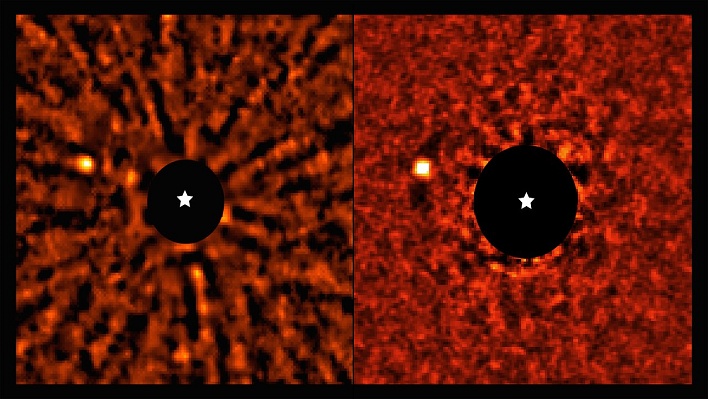Astronomers Unveil A Jupiter-Like Exoplanet Playing Hide And Seek In Light Of Its Star

Two groups of astronomers took on the task of studying star catalogs from the European Space Agency's Hipparcos and Gaia satellites. While perusing the data, both teams discovered that the star AF Leporis displayed a disrupted trajectory, an indicator that a planet may be lurking nearby. Upon further investigation using the VLT, both were able to directly image the orbiting exoplanet.
The teams used astrometry in order to unveil the planet, which is only a few times more massive than Jupiter. Both also used the SPHERE instrument, the extreme adaptive optics system, and coronagraphic facility at the VLT. SPHERE's primary goal is to image low-resolution spectroscopic, and polarimetric characterizations of extra-solar planetary systems at optical and near-infrared wavelengths.
The instrument was able to "correct the blurring caused by atmospheric turbulence using adaptive optics," as well as block the light being emitted by the star with a special mask, thus unveiling the hidden planet next to it. The teams also discovered that the exoplanet is the lightest to be detected with the combined use of astrometric measurements and direct imaging.
The AF Leporis system has similarities to our own Solar System, such as a debris belt akin to the Kuiper belt. But what makes this find perhaps more intriguing, is that the AF Leporis system is only 24 million years old, or about 200 times younger than our Sun. By studying this system further, astronomers and scientists could unlock secrets to our own Solar System and how it was formed.
Both groups, led by Dino Mesa (NAF, Italy) and Robert De Rosa (ESO, Chile), have submitted scientific articles concerning their findings that have been accepted for publication in Astronomy and Astrophysics.

